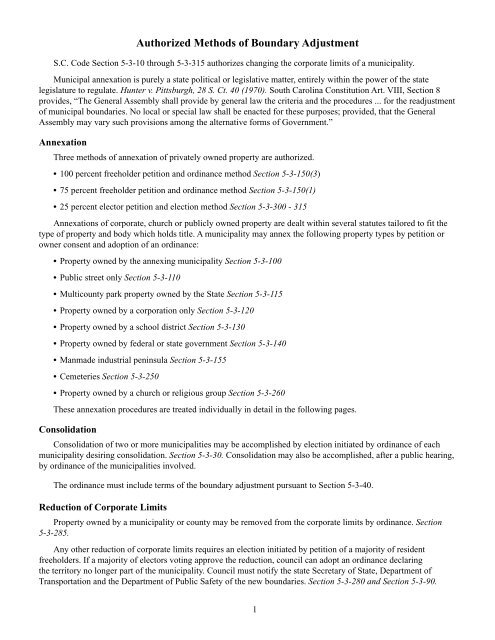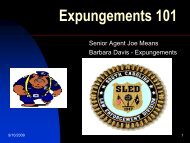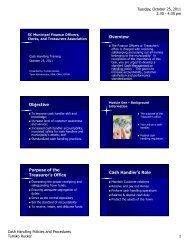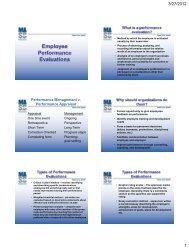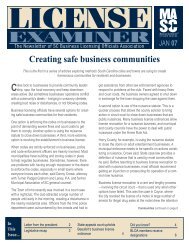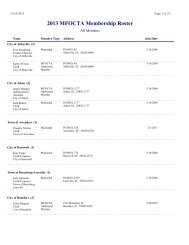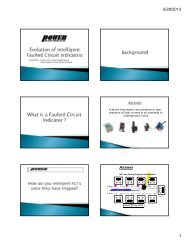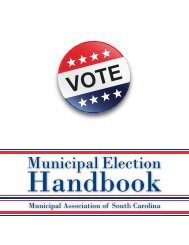Annexation Handbook - Municipal Association of South Carolina
Annexation Handbook - Municipal Association of South Carolina
Annexation Handbook - Municipal Association of South Carolina
You also want an ePaper? Increase the reach of your titles
YUMPU automatically turns print PDFs into web optimized ePapers that Google loves.
Authorized Methods <strong>of</strong> Boundary Adjustment<br />
S.C. Code Section 5-3-10 through 5-3-315 authorizes changing the corporate limits <strong>of</strong> a municipality.<br />
<strong>Municipal</strong> annexation is purely a state political or legislative matter, entirely within the power <strong>of</strong> the state<br />
legislature to regulate. Hunter v. Pittsburgh, 28 S. Ct. 40 (1970). <strong>South</strong> <strong>Carolina</strong> Constitution Art. VIII, Section 8<br />
provides, “The General Assembly shall provide by general law the criteria and the procedures ... for the readjustment<br />
<strong>of</strong> municipal boundaries. No local or special law shall be enacted for these purposes; provided, that the General<br />
Assembly may vary such provisions among the alternative forms <strong>of</strong> Government.”<br />
<strong>Annexation</strong><br />
Three methods <strong>of</strong> annexation <strong>of</strong> privately owned property are authorized.<br />
• 100 percent freeholder petition and ordinance method Section 5-3-150(3)<br />
• 75 percent freeholder petition and ordinance method Section 5-3-150(1)<br />
• 25 percent elector petition and election method Section 5-3-300 - 315<br />
<strong>Annexation</strong>s <strong>of</strong> corporate, church or publicly owned property are dealt within several statutes tailored to fit the<br />
type <strong>of</strong> property and body which holds title. A municipality may annex the following property types by petition or<br />
owner consent and adoption <strong>of</strong> an ordinance:<br />
• Property owned by the annexing municipality Section 5-3-100<br />
• Public street only Section 5-3-110<br />
• Multicounty park property owned by the State Section 5-3-115<br />
• Property owned by a corporation only Section 5-3-120<br />
• Property owned by a school district Section 5-3-130<br />
• Property owned by federal or state government Section 5-3-140<br />
• Manmade industrial peninsula Section 5-3-155<br />
• Cemeteries Section 5-3-250<br />
• Property owned by a church or religious group Section 5-3-260<br />
These annexation procedures are treated individually in detail in the following pages.<br />
Consolidation<br />
Consolidation <strong>of</strong> two or more municipalities may be accomplished by election initiated by ordinance <strong>of</strong> each<br />
municipality desiring consolidation. Section 5-3-30. Consolidation may also be accomplished, after a public hearing,<br />
by ordinance <strong>of</strong> the municipalities involved.<br />
The ordinance must include terms <strong>of</strong> the boundary adjustment pursuant to Section 5-3-40.<br />
Reduction <strong>of</strong> Corporate Limits<br />
Property owned by a municipality or county may be removed from the corporate limits by ordinance. Section<br />
5-3-285.<br />
Any other reduction <strong>of</strong> corporate limits requires an election initiated by petition <strong>of</strong> a majority <strong>of</strong> resident<br />
freeholders. If a majority <strong>of</strong> electors voting approve the reduction, council can adopt an ordinance declaring<br />
the territory no longer part <strong>of</strong> the municipality. Council must notify the state Secretary <strong>of</strong> State, Department <strong>of</strong><br />
Transportation and the Department <strong>of</strong> Public Safety <strong>of</strong> the new boundaries. Section 5-3-280 and Section 5-3-90.<br />
1


